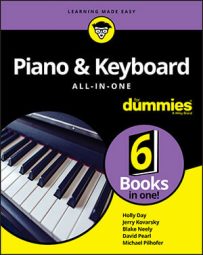Psalteries, virginals, clavichords, and harmoniums are acoustic keyboards. Honestly, you don’t need a list of pros and cons for these very rare instruments. If you find one and can’t live without it, go ahead and purchase it.
Pianos, harpsichords, and pipe organs are also acoustic keyboards. These pros and cons focus on acoustic pianos because they’re the most commonly purchased acoustic keyboards.
Pros
The following characteristics are real selling points for an acoustic piano:
Sound quality: No matter how good a digital keyboard is, it doesn’t match the sound and feel of a grand piano — or even an upright piano.
Value: Good-quality acoustic pianos appreciate in value over the years if kept in good condition. You can think of your purchase as an investment.
Aesthetics: There’s nothing like playing an acoustic piano. It feels real, it looks great, and you can imagine yourself on a concert stage.
Cons
Here are valid concerns about acoustic pianos:
Cost: Plain and simple, new and even used pianos are generally more expensive than new digital keyboards.
Size and space: Get practical and think about whether you have room to house the piano and play it. You should also measure the doorway while you’re at it to make sure you can even get the piano where you want it.
Maintenance: Annual or semiannual tuning at a cost of around $75 to $150 per tuning isn’t cheap, but it’s essential.

